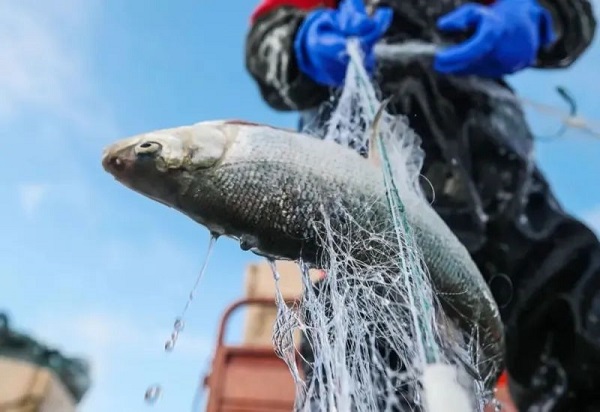Expanding development of cold-water fisheries boosts Xinjiang's fishing industry

Xinjiang has succeeded in a pilot project to develop technology to simulate seawater in its fishery located on the edge of a desert. [Photo/seexinjiang.com]
There has been an increasing effort in the development of Xinjiang's seawater aquafarming, such as freshwater fish, king prawn, abalone and lobsters, to seek technological breakthroughs in agriculture.
Xinjiang has succeeded in a pilot project to develop technology to simulate seawater in its fishery located on the edge of a desert.
The saline level – a mixture of salt and water – in southern Xinjiang is naturally "close to the level in seawater".
The region boasts abundant fishing resources, with a total of 88 fish species, of which 46 are indigenous. Through a combination of historical evolution and geographical barriers, these indigenous fish species in Xinjiang have developed distinct regional characteristics.
In 2022, Xinjiang's total fishery production reached 173,000 tons, ranking second among the five provincial regions in Northwest China. The total production of salmon reached 4,554 tons, accounting for 15 percent of the country's inland production.
With its fishing industry starting to take shape, Xinjiang's fishing sector holds immense prospects for future development.
 Attractions
Attractions Dining
Dining Culture
Culture